Dec 4, 2013 | coins, legislative, policy, US Mint
Cue the crickets…
There were no bills introduced, discussed or voted on by congress in November.
Regardless of the side of the political aisle you sit there is no denying that congress’s approval ratings being at an an all time low is not surprising. In the context of numismatics, congress decides what is produced making those of us interested in the numismatic market a watcher of congress as closely as the spot prices of precious metals. The monthly article describing the monthly legilsative activity in congress is from watching what may be in the pipeline for future products from the U.S. Mint.
Just so there is something to report, here is a list of the coin-related legislation and its status for the 113th congress:
Signed into Law
Believe it or not, there has been some law making in this congress. The following has passed both the House of Representatives and Senate and has be signed by the President of the United States into law:
H.R. 1071: To specify the size of the precious-metal blanks that will be used in the production of the National Baseball Hall of Fame commemorative coins.
Sponsor: Rep. Richard Hanna (R-NY)
• This bill is a technical change to the National Baseball Hall of Fame Commemorative Coin Act.
• Signed by the President on May 17, 213
• This bill became Public Law 113-10
See the information about this bill at http://www.govtrack.us/congress/bills/113/hr1071
Passed in the House of Representatives
Bills introduced and passed in the House of Representatives are sent to the Senate for consideration. The following bill passed the House and is awaiting action in the Senate:
H.R. 2754: Collectible Coin Protection Act
Sponsor: Rep. George “G.K.” Butterfield, Jr. (D-NC)
• To amend the Hobby Protection Act to make unlawful the provision of assistance or support in violation of that Act
• Introduced: Jul 19, 2013; Referred to House Energy and Commerce Committee
• Passed in the House of Representatives: Jul 30, 2013 (voice vote)
• Received in the Senate: July 31, 2013; Referred to Senate Committee on Commerce, Science, and Transportation
Track this bill at http://www.govtrack.us/congress/bills/113/hr2754
Introduced in the House of Representatives
Coin-related bills introduced in the House of Representatives are usually referred o the House Committee on Financial Services. Bills referred to other committees are noted in the following list of bills introduced in the House:
H.R. 77: Free Competition in Currency Act of 2013
Sponsor: Rep. Paul Broun Jr. (R-GA)
• To repeal the legal tender laws, to prohibit taxation on certain coins and bullion, and to repeal superfluous sections related to coinage.
• Introduced on January 3, 2013
• Referred to the Financial Services, Ways and Means, and the Judiciary Committees on January 3, 2013
Track this bill at http://www.govtrack.us/congress/bills/113/hr77
H.R. 220: Stop the Coin Act
Sponsor: Rep. Greg Walden (R-OR)
• To limit the face value of coins that the Secretary of the Treasury may issue.
• Introduced on January 14, 2013
• Referred to the House Committee on Financial Services on January 14, 2013
Track this bill at http://www.govtrack.us/congress/bills/113/hr220
H.R. 627: National Park Service 100th Anniversary Commemorative Coin Act
Sponsor: Rep. Erik Paulsen (R-MN)
• To provide for the issuance of coins to commemorate the 100th anniversary of the establishment of the National Park Service.
• Introduced: February 13, 2013
• Referred to the House Financial Services Committee on February 13, 2013
Track this bill at
H.R. 1218: Commemorative Coins Reform Act of 2013
Sponsor: Rep. Justin Amash (R-MI)
• To prohibit the payment of surcharges for commemorative coin programs to private organizations or entities
• Introduced: March 15, 2013
• Referred to the House Financial Services Committee on March 15, 2013
Track this bill at http://www.govtrack.us/congress/bills/113/hr1218
H.R. 1653: Pro Football Hall of Fame Commemorative Coin Act
Sponsor: Rep. James Renacci (R-OH)
• Introduced: April 18, 2013
Track this bill at http://www.govtrack.us/congress/bills/113/hr1653
H.R. 1719: Cents and Sensibility Act
Sponsor: Rep. Steve Stivers (R-OH)
• To amend title 31, United States Code, to save the American taxpayers money by immediately altering the metallic composition of the one-cent, five-cent, dime, and quarter dollar coins, and for other purposes.
• Introduced: April 24, 2013
Track this bill at http://www.govtrack.us/congress/bills/113/hr1719
H.R. 1905: Mother’s Day Centennial Commemorative Coin Act
Sponsor: Rep. David McKinley (R-WV)
• Introduced: May 9, 2013
Track this bill at http://www.govtrack.us/congress/bills/113/hr1905
H.R. 2366: World War I American Veterans Centennial Commemorative Coin Act
Sponsor: Rep. Doug Lamborn (R-CO)
• Introduced: June 13, 2013
Track this bill at http://www.govtrack.us/congress/bills/113/hr2366
H.R. 2633: Thirteenth Amendment Commemorative Coin Act
Sponsor: Rep. Danny Davis (D-IL)
• To require the Treasury to mint coins in commemoration of the Sesquicentennial Anniversary of the adoption of the Thirteenth Amendment to the United States Constitution, which officially marked the abolishment of slavery in the United States.
• Introduced: July 9, 2013
Track this bill at http://www.govtrack.us/congress/bills/113/hr2633
H.R. 2760: Panama Canal and Pan-Pacific Exhibition Centennial Celebration Act
Sponsor: Rep. Nancy Pelosi (D-CA)
• To require the Secretary of the Treasury to mint coins in commemoration of the centennial of the Panama-Pacific International Exposition and the Panama Canal
• Introduced: July 19, 2013
Track this bill at http://www.govtrack.us/congress/bills/113/hr2760
H.R. 2932: United States Coast Guard Commemorative Coin Act
Sponsor: Rep. Joe Courtney (D-CT)
• To require the Secretary of the Treasury to mint coins in commemoration of the United States Coast Guard.
• Introduced: August 1, 2013
Track this bill at http://www.govtrack.us/congress/bills/113/hr2932
H.R. 3146: Savings, Accountability, Value, and Efficiency (SAVE) II Act
Sponsor: Rep. Patrick Murphy (D-FL)
• To take steps to reduce the deficit of the Federal Government.
• Sec. 8. Prohibition On Non-Cost Effective Minting and Printing Of Coins and Currency
• Introduced: September 18, 2013
• Referred to many committees including the Committee on Ways and Means
Track this bill at http://www.govtrack.us/congress/bills/113/hr3146
Sponsor: Rep. Michael Fitzpatrick (R-PA)
• To improve the circulation of $1 coins, to remove barriers to the circulation of such coins.
• Introduced: October 22, 2013
Track this bill at http://www.govtrack.us/congress/bills/113/hr3305
Introduced in the Senate
Even though financial bills are constitutionally required to begin in the House of Representatives, it is not beneath the Senate to introduce their own legislation or concurrent bills with the House. Coin-related bills introduced in the Senate are usually referred to the Senate Committee on Banking, Housing, and Urban Affairs. The bills introduced in the Senate are as follows:
S. 94: To terminate the $1 presidential coin program
Sponsor: Sen. David Vitter (R-LA)
• Introduced on January 23, 2013
• Referred to the Senate Committee on Banking, Housing, and Urban Affairs on January 23, 2013
Track this bill at http://www.govtrack.us/congress/bills/113/s94
S. 203: Pro Football Hall of Fame Commemorative Coin Act
Sponsor: Sen. Robert “Rob” Portman (R-OH)
• A bill to require the Secretary of the Treasury to mint coins in recognition and celebration of the Pro Football Hall of Fame.
• Introduced on January 31, 2013
• Senate Banking, Housing, and Urban Affairs Committee on January 31, 2013
Track this bill at http://www.govtrack.us/congress/bills/113/s203
S. 768: Sound Money Promotion Act
Sponsor: Sen. Mike Lee (R-UT)
• A bill to treat gold and silver coins used as legal tender in the same manner as United States currency for taxation purposes.
• Introduced: April 18, 2013
• Referred to the Senate Committee on Finance
Track this bill at http://www.govtrack.us/congress/bills/113/s768
S. 1011: Boys Town Centennial Commemorative Coin Act
Sponsor: Sen. Mike Johanns (R-NE)
• A bill to require the Secretary of the Treasury to mint coins in commemoration of the centennial of Boys Town
• Introduced: May 22, 2013
• Referred to the Senate Committee on Finance
Track this bill at http://www.govtrack.us/congress/bills/113/s1011
S. 1105: Currency Optimization, Innovation, and National Savings Act
Sponsor: Sen. Tom Harkin (D-IA)
• To improve the circulation of $1 coins, to remove barrier to the circulation of such coins
• Introduced: June 6, 2013
Track this bill at http://www.govtrack.us/congress/bills/113/s1105
S. 1158: National Park Service 100th Anniversary Commemorative Coin Act
Sponsor: Sen. Mark Warner (D-VA)
• Introduced: June 13, 2013
Track this bill at http://www.govtrack.us/congress/bills/113/s1158
Nov 20, 2013 | advice, coin design, commemorative, legislative, policy, US Mint
As a comment on my post about the selection design for my 2014 Baseball Hall of Fame Commemorative coin a reader commented with a simple question: Can you offer a suggestion as to who I can approach to offer an idea for a commemorative dollar?
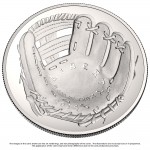
National Baseball Hall of Fame Commemorative was introduced by Rep. Richard Hanna (R-NY) whose district includes Cooperstown, NY
While I cannot fix the fractious nature of congress, I can offer suggestions as to how to get a commemorative coin recognized as a good idea.
As you read this post, let me remind you that former German Chancellor Otto von Bismarck once said, “Laws are like sausages, it is better not to see them being made.” What follows is a look into what it takes to make the sausage in order to propose a commemorative coin and have it become law.
First, rather than starting with congress talk with organizations in the area of interest. After all, commemorative coin programs are fundraising vehicles for the organizations. It helps congress know who will receive the money. In this case, my correspondent wants to see a commemorative coin to be issued in 2017 commemorate the 50th anniversary of the first ever heart transplant.
“My hope is to get more people aware of the need of people to sign up for the donor list to make more organs available,” my correspondent writes. “A donor sign up card could be included with each order. Proceeds could fund awareness program….”
The problem is that this is a good and noble idea but the first question a congress person would ask is what organization would receive the money? Unfortunately, congress is not into creative thinking and would like to know who could receive the money, how the money would be used, and what guarantees that the money earned from the commemorative program would be used for its intended purposes.
Do not expect the representative to do all of the work. In fact, do not expect the congress person to do much of the work until the bill is written and submitted. Even though congress will be in session fewer hours this year than in recent recorded memory, the members will tell you they are too busy to work on this issue. The nature of modern politics is that unless you are going to cut them, the party, their political action committee, or one of their other campaign committees a check, your chance for success is diminished.
However, you can cut through the fog of politics by working with a credible non-profit organization—or a coalition of non-profit organizations—with your interest.

I’m just a bill
Yes, I’m only a bill
And I’m sitting here on Capitol Hill
When contacting these people, I would have an elevator-speech ready. An elevator speech is one that pitches your idea in the time it would take to ride an elevator. In other words, keep it short and to the point. Make sure your pitch includes something compelling to want them ask for more information and make sure you anticipate any questions.
The nice part about partnering with the AHA is that they are very experienced with legislative affairs. I have no doubt that they either have a full-time lobbyist on staff or have hired a lobbying firm to represent their interests before congress. This is one area where you do not have to answer questions. However you should know a little about commemorative coin bills that congress has considered. These issues are as follows:
Q: After a commemorative coin bill is introduced, which committee will it be assigned?
Q: How does the organization make money from a commemorative coin?
A: Congress sets a surcharge over and above the cost to produce the coin that will be given to the sponsoring organization. Usually, the surcharges are $35 for gold coins, $10 for silver dollars, and $5 for clad 50-cent coins.
Q: Are limits set for the number of coins sold?
A: There are no pre-set limits unless written into the law. Usually, congress has set the limits to be not more than 100,000 $5 gold coins, 500,000 $1 silver coins, and 750,000 50-cent clad coins. The number of uncirculated versus proof issues is determined by the
U.S. Mint as long as they remain within these limits. Coins are produced and sold by the U.S. Mint only during the year of issue.
Q: Who designs the coins?
Q: How do we request that heart health and transplant awareness be inserted into the coins with the Certificate of Authenticity?
A: Make sure that the information is added to the law. Unless the sponsoring organization can compel the U.S. Mint to add it, you are better off making sure the law requires that the U.S. Mint does this.
Q: Can you give me an example of how one of these bills is written?
A: Most of the time, when you read the bills submitted to congress, you will see text that calls for editing of the law, which is called the United States Code (U.S.C.). It may say to strike words, replace words, add paragraphs, add sections, and all sorts of other editing that does not make sense unless you know what the U.S.C. says when the bill was written.
Since most commemorative coin bills are additions to the law, they are usually added to Title 31, Section 5112 of the United States Code (31 U.S.C. § 5112). Many times, the bill does not mention where the new law will be inserted when it is introduced. It will be corrected before passage.
If you want to provide the member of congress with the text of a bill, which many times is helpful, you may want to use something that has already been introduced as an example to write your own text. Two good examples are as follows:
When visiting the website, look on the right side in the lower half for the link marked “Read Bill Text.”
Both bills specify gold, silver, and clad coins. Your proposal does not have to include all three. In fact, to raise awareness, you might want to consider just a silver dollar and a clad half-dollar.
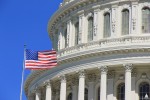
Too bad there’s so much dysfunction in such a beautiful building.
Once you convince a member of congress to submit the bill and get the member’s support, a professional legislative affairs person would know how to convince other members to sign up as co-sponsors. While having a lot of co-sponsors does not guarantee success, it helps with the bill’s awareness and make it more attractive to pass.
There are other political maneuvers that can be used to have the bill passed, such as convincing a member to bring up the bill under a procedure called “suspension of the rules.” In the House of Representatives, a bill brought to a floor vote under the suspension of the rules are usually non-controversial measures that have no objections—or no objections that would be voiced on the floor. The bill would then pass by unanimous consent or a voice vote.
The procedure is similar in the Senate.
Once the bill passes one chamber, it is sent to the other for it to work on passage.

House of Representatives
While the bill is in congress it does not mean you have to sit on your hands and wait. One of the best things you can do is to tell your friends, relatives, and anyone else who will listen to call or email their representative to support the bill. If they are not a co-sponsor, tell their staff that they member should be and why. If they are a co-sponsor, thank them for their support and ask if they could get other members signed on as co-sponsors. If you can find people whose representatives are a member of the House Financial Services Committee or the Senate Banking Committee, then they should modify their support by saying to please help get the bill passed through the committee.

The World’s Most Deliberative Body, the United States Senate
But that does not mean to stop your efforts. Citizen lobbying efforts in the Senate are doubled because each state has two senators. Make sure you and your supporters contact both of your senators. Remember, it is your right as a citizen to meet with your representatives and this includes senators. You can make an appointment to let your senators know how your feel. If your senator is a member of the Senate Banking Committee, then they should be asked to help move the bill out of committee and to the floor for a vote.
The work is not done until the bill is passed or congress is adjourned for the last time on January 2, 2015. Bills not acted upon when congress adjourns for the last time in the session will be considered to have “died in committee.” If the bill dies in committee, you can do this all over again and try to convince a member of congress to submit the bill in the 114th congress that would open its session at noon on January 3, 2015.
If the bill passes both chambers it is likely it will be signed by the president. As far as I know there has never been a commemorative coin bill to have been vetoed by any president.
Although there are a lot of good ideas, many of them are not properly introduced to congress. The few that do make it do not receive enough support to move beyond introduction. Even fewer are passed by one chamber and not both. Those that make it past congress to the president’s desk had some effort behind them besides being just a good idea. After all, with only two commemorative coin programs allowed per year, congress has to be convinced to believe your commemorative idea is better than another for that same year.
Sausage anyone?
Baseball Hall of Fame Commemorative coin courtesy of the
U.S. Mint.
Images of congress and the capitol courtesy of the
Architect of the Capitol.
Image from School House Rock’s “I’m Just a Bill” can be found all over the interwebs.
Nov 2, 2013 | BEP, coins, currency, legislative, policy, US Mint
Believe it or not, there was a little business actually being done by the congress other than the partisan bickering.
H.R. 3305 Currency Optimization, Innovation, and National Savings Act
Sponsor: Rep. Michael Fitzpatrick (R-PA)
• To improve the circulation of $1 coins, to remove barriers to the circulation of such coins.
• Introduced: October 22, 2013
• Referred to the House Committee on Financial Services
Track this bill at http://www.govtrack.us/congress/bills/113/hr3305
Oct 3, 2013 | coins, commemorative, legislative, policy, US Mint
H.R. 3146: Savings, Accountability, Value, and Efficiency (SAVE) II Act
Sponsor: Rep. Patrick Murphy (D-FL)
• To take steps to reduce the deficit of the Federal Government.
• Sec. 8. Prohibition On Non-Cost Effective Minting and Printing Of Coins and Currency
• Introduced: September 18, 2013
• Referred to many committees including the Committee on Ways and Means
Track this bill at http://www.govtrack.us/congress/bills/113/hr3146
H.R. 3186: Hank Aaron Congressional Gold Medal Act
Sponsor: Rep. Ron Kind (D-WI)
• To award a Congressional Gold Medal to Hank Aaron, in recognition of his contributions to the national pastime of baseball and his perseverance in overcoming discrimination and adversity to become a role model for all Americans.
• Introduced: September 26, 2013
• Referred to the House Financial Services Committee
Track this bill at http://www.govtrack.us/congress/bills/113/hr3186
I usually do not include bill for congressional gold medals. As a fan of Hank Aaron, I am including it to show my support. If congress should ever get its act together, it would be nice if they would immediately pass this by unanimous consent.
Sep 6, 2013 | coins, commemorative, legislative, policy, US Mint
H.R. 2932: United States Coast Guard Commemorative Coin Act
Sponsor: Rep. Joe Courtney (D-CT)
• To require the Secretary of the Treasury to mint coins in commemoration of the United States Coast Guard.
• Introduced: August 1, 2013
• Referred to the House Committee on Financial Services
Track this bill at http://www.govtrack.us/congress/bills/113/hr2932
Aug 10, 2013 | coins, counterfeit, legislative
The fight against fakes has taken a significant step forward with the passage of the Collectible Coin Protection Act in the House of Representatives before congress left for summer recess.
Formerly H.R. 1849, the current was reintroduced by Rep. G.K. Butterfield (D-NC) to resolve a technical issue. All of the co-sponsors for H.R. 1849 co-sponsored H.R. 2754 with the addition of Rep. Lee Terry (R-NE).
On July 30, H.R. 2754 was brought to the floor of the House of Representatives on the suspension calendar. Bills on the suspension calendar are those that are considered non-controversial and have broad support. For this bill, Rep. Michael Burgess (R-TX) was the floor manager and moved to suspend the rules and pass this bill. After a brief introduction, Rep. Butterfield spoke on behalf of the bill.
If you want to read what was said, it begins near the bottom of the second column of page H5147 in the Congressional Record. [PDF]
H.R. 2754 passed the House of Representatives on a unanimous voice vote.
The bill will be sent to the Senate but will not be considered until after the summer break.
It is not too early to contact your senator to ask for their support. Just go to senate.gov and use the pull down menu in the upper-right corner of the page to select the state you live or work. Please take the time to contact both of your senators. In fact, if they hold town hall meetings in your area, you can use that opportunity to
Collectors who live in North Carolina’s First District, can send email to Rep. Butterfield to thank him for his help. Everyone else can send him a quick note on Twitter to @GKButterfield to show your appreciation!
You can read the Collectible Coin Protection Act and track the bill’s progress at http://www.govtrack.us/congress/bills/113/hr2754.
Aug 2, 2013 | coins, commemorative, legislative, policy, US Mint
H.R. 2633: Thirteenth Amendment Commemorative Coin Act
Sponsor: Rep. Danny Davis (D-IL)
• To require the Treasury to mint coins in commemoration of the Sesquicentennial Anniversary of the adoption of the Thirteenth Amendment to the United States Constitution, which officially marked the abolishment of slavery in the United States.
• Introduced: July 9, 2013
• Referred to the House Committee on Financial Services
Track this bill at http://www.govtrack.us/congress/bills/113/hr2633
H.R. 2754: Collectible Coin Protection Act
Sponsor: Rep. George “G.K.” Butterfield, Jr. (D-NC)
• To amend the Hobby Protection Act to make unlawful the provision of assistance or support in violation of that Act
• Introduced: Jul 19, 2013; Referred to House Energy and Commerce Committee
• Passed in the House of Representatives: Jul 30, 2013 (voice vote)
• Received in the Senate: July 31, 2013; Referred to Senate Committee on Commerce, Science, and Transportation
Track this bill at http://www.govtrack.us/congress/bills/113/hr2754
H.R. 2760: Panama Canal and Pan-Pacific Exhibition Centennial Celebration Act
Sponsor: Rep. Nancy Pelosi (D-CA)
• To require the Secretary of the Treasury to mint coins in commemoration of the centennial of the Panama-Pacific International Exposition and the Panama Canal
• Introduced: July 19, 2013
• Referred to the House Committee on Financial Services
Track this bill at http://www.govtrack.us/congress/bills/113/hr2760
Jul 22, 2013 | coins, dollar, legislative, policy
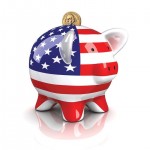
Dollar Coin Alliance
The COINS Act is designed to eliminate the $1 federal reserve note from circulation by increasing the circulation of coins and reducing the circulation of the paper currency over three years. At the end of three years, the Federal Reserve will not be allowed to distribute the $1 not. The bill does allow the Bureau of Engraving and Printing to continue to distribute the $1 note as a collectible for numismatists.
The bill was introduced by Sen. Tom Harkin (D-IA) and co-sponsored by Sens. John McCain (R-AZ), Tom Coburn (R-OK), Mike Enzi (R-WY) and Mark Udall (D-CO). It supports the GAO reports that suggest the potential savings of using the coin over paper will be $13 billion.
If you are in the Washington, DC area and what to talk about the COINS Act, the briefing will be held a noon at the Russell Senate Office Building in Room 385. Attending the briefing for the Council for Citizens Against Government Waste and The Dollar Coin Alliance:
- Aaron Klein, Former Chief economist for the Senate Banking Committee and Deputy Assistant Secretary of the U.S. Treasury
- William Christian, Director of Government Affairs, The Council for Citizens Against Government Waste
- Former Congressman Jim Kolbe (R-AZ), Honorary Co-Chair of the Dollar Coin Alliance
If you cannot attend the briefing, take the opportunity to contact your senators to let them know how you feel about the bill.
Logo courtesy of the Dollar Coin Alliance.
Jul 2, 2013 | coins, legislative, policy
S. 1105: Currency Optimization, Innovation, and National Savings Act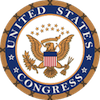
Sponsor: Sen. Tom Harkin (D-IA)
• To improve the circulation of $1 coins, to remove barrier to the circulation of such coins
• Introduced: June 6, 2013
• Referred to the Senate Committee on Banking, Housing, and Urban Affairs
Track this bill at http://www.govtrack.us/congress/bills/113/s1105
S. 1158: National Park Service 100th Anniversary Commemorative Coin Act
Sponsor: Sen. Mark Warner (D-VA)
• Introduced: June 13, 2013
• Referred to the Senate Committee on Banking, Housing, and Urban Affairs
Track this bill at http://www.govtrack.us/congress/bills/113/s1158
H.R. 2366: World War I American Veterans Centennial Commemorative Coin Act
Sponsor: Rep. Doug Lamborn (R-CO)
• Introduced: June 13, 2013
• Referred to the House Committee on Financial Services
Track this bill at http://www.govtrack.us/congress/bills/113/hr2366
Jun 27, 2013 | coins, dollar, legislative
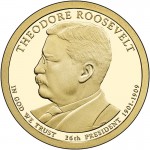 Earlier this month, Sen. Tom Harkin (D-IA) introduced the Currency Optimization, Innovation, and National Savings (COINS) Act (S. 1105) to transition the United States to the use of a one-dollar coin rather than a paper dollar. Harkin introduced the bill with Senators Tom Coburn (R-OK), Mike Enzi (R-WY), John McCain (R-AZ), and Mark Udall (D-CO) as co-sponsors. The bill was assigned to the Senate Committee on Banking, Housing, and Urban Affairs. Only Sen. Coburn is a member of the Senate Banking Committee.
Earlier this month, Sen. Tom Harkin (D-IA) introduced the Currency Optimization, Innovation, and National Savings (COINS) Act (S. 1105) to transition the United States to the use of a one-dollar coin rather than a paper dollar. Harkin introduced the bill with Senators Tom Coburn (R-OK), Mike Enzi (R-WY), John McCain (R-AZ), and Mark Udall (D-CO) as co-sponsors. The bill was assigned to the Senate Committee on Banking, Housing, and Urban Affairs. Only Sen. Coburn is a member of the Senate Banking Committee.
This gang of five appears to have put a lot of thought into the bill in order to try to make the transition more palatable. The first provision of the bill is to remove Susan B. Anthony dollars from circulation within six month. Introduced with much fanfare in 1979 as the first U.S. circulating coins to feature the portrait of a woman, the Susie B.’s were an instant failure when they were mistaken for quarters. They were such a failure, some (alleged) journalists who does not know that the dollar coin was redesigned in 2000 to gristle when thinking of their past experiences.
When the coins are withdrawn from circulation (the bill calls them “sequestered”), they will be available for sale to coin dealers and can be sold to countries that use the U.S. dollar as its currency. Otherwise, these Susie B.’s will remain in legal and withdrawn by the banks when they are deposited. Although the bill does not provide explanation for these provisions, it can only be assume to prevent these coins from causing the confusion we experienced when they were released in 1979.
Aside from the circulation reporting requirements, the section encourages countries that have adopted the U.S. dollar to order coins from the Federal Reserve and for the member banks to only ship dollar coins. However, there are countries that have adopted U.S. currency as its standard that cannot afford the shipment of paper currency and have experienced a shortage of Federal Reserve notes for use in its daily commerce. The switch to coins will make shipping that much more expensive and may lead to a currency shortage in some countries.
As the Federal Reserve “sequesters” SBA dollars, the bill says that the Fed is to start replacing notes with coins but not completely. The bill allows both the notes and coins to circulate concurrently until more than 600 million coins are put into circulation or after four years, whichever comes first. Once the co-circulation trigger is met, the Fed will not be allowed to order currency for one year, thus reducing the supply of the paper note leaving people no choice but to use the dollar coin.
One interesting provision of the bill is that it does not completely eliminate the dollar note. According to the bill, the Fed may produce dollar notes “from time to time are appropriate solely to meet the needs of collectors of that denomination.” Much like the half dollar coin that does not circulate but is included in sets and made available to the collecting community, this will allow the Bureau of Engraving and Printing to produce special sets using one dollar notes in much of the same way they do with the $2 notes today.
A little noticed provision of the bill updates the handling of seigniorage that the U.S. Mint deposits into the United States Mint Public Enterprise Fund (31 USC § 5136). The revision simply allows congress to estimate the value of the seigniorage that will be deposited into the Public Enterprise Fund to be used for the budget process. Without this change, the government can only use the actual value in the account, which is the amount deposited in previous years.
It is probably not lost on these senators that since the Treasury pulled back on the production of dollar coins that the amount of seigniorage has decreased. If congress is going to force the dollar coin into circulation, it will increase the seigniorage the U.S. Mint will collect making those profits a prime target for the government to use for its own purposes. This provision will allow congress to attach those profits before being collected rather than waiting for them to be collected. Although this may not sound right, it is consistent with how congress estimates the collection of tax receipts for the current budgetary process.
Considering my recent experience in Canada using one dollar (Loonies) and two dollar (Toonies) coins, I would like to see this bill passed into law. Given the gridlock that congress has demonstrated by passing only 14 bills to this point of the 113th congress, one cannot be optimistic about congressional action.








